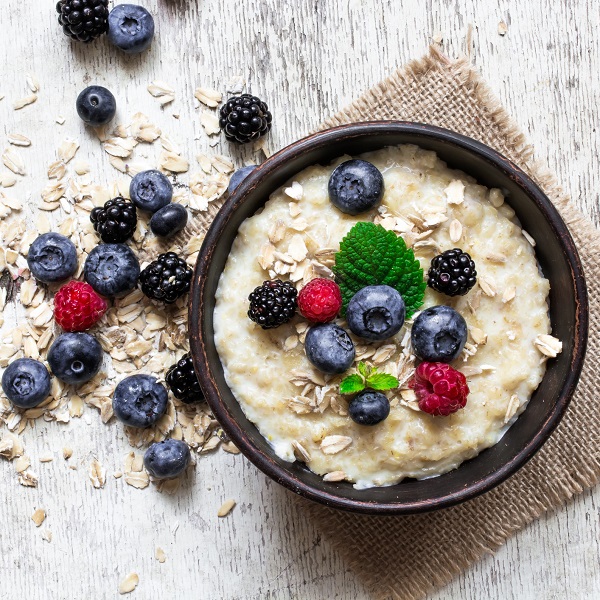
Blog post
Prioritizing Mental Health as a Universal Human Right
By: Neltada Charlemagne, DNP, APRN, PMHNP-BC, PHN, BHC
Learn 4 things you can do today for a healthy heart.
For most Americans, diet is the single most predictive risk factor for developing heart disease. Eating the calorie-rich, high sodium and processed standard American diet causes plaques to form in blood vessels. These plaques can lead to heart disease and early death.[i] The standard American diet also promotes high blood pressure, high serum cholesterol and inflammation. These factors increase the risk of heart disease.
The plaques that form on the artery walls (atherosclerosis) can restrict blood flow, rupture, and cause chest pain (angina). Atherosclerosis can also cause heart attacks and strokes.
One out of every six deaths in the United States is due to coronary heart disease.
A major contributor to the poor diet typical of most Americans is saturated fat and trans fat.[ii] Trans fats are found in animal-based foods such as beef, chicken, fish, seafood, eggs, milk, cheese and yogurt. You can also find saturated fat in coconut products and palm oil. Studies show that choosing fish and poultry over beef and pork makes no significant changes in total cholesterol.[iii] It is better to focus on eating fiber-rich plant foods[iv] which do not have saturated fats or trans fats. Fiber-rich plant foods also contain fiber, which can lower total cholesterol.[v] Choosing a plant-based diet is the best thing you can do for your heart.[vi]
Your lifestyle choices affect your risk of heart disease. Change your lifestyle, change your life.[vii] Studies show that a plant-based diet gives the best chances for protection against heart disease and survival from heart disease.[viii]

Breakfast
Any cooked, whole-grain cereal or muesli, fruit, seeds or nuts.
Lunch
Any beans, vegetables, starchy vegetables or whole grains, and fruit.
Dinner
Vegetable soup, salads, wraps, sandwiches, potatoes, grain and bean bowls, fruit, etc.
Snacks
Fruits, vegetables and hummus, beans, leftovers, nuts or fruit trail mix, avocado or peanut butter toast, small bean burrito, unsweetened apple sauce, small bowl of oatmeal, etc.
[i] Micha, R., G. Michas, and D. Mozaffarian, Unprocessed Red and Processed Meats and Risk of Coronary Artery Disease and Type 2 Diabetes – An Updated Review of the Evidence. Current Atherosclerosis Reports, 2012. 14(6): p. 515-524.
[ii] Horowitz, J.F., et al., Changes in markers for cardio-metabolic disease risk after only 1-2 weeks of a high saturated fat diet in overweight adults. PLOS ONE, 2018. 13(6): p. e0198372.
[iii] A meta-analysis of randomized controlled trials that compare the lipid effects of beef versus poultry and/or fish consumption
Maki, Kevin C. et al. Journal of Clinical Lipidology, Volume 6, Issue 4 , 352 – 361
[iv] Tharrey, M., et al., Patterns of plant and animal protein intake are strongly associated with cardiovascular mortality: the Adventist Health Study-2 cohort. Int J Epidemiol, 2018. 47(5): p. 1603-1612.
[v] The effect of combining plant sterols, soy protein, viscous fibers, and almonds in treating hypercholesterolemia
Jenkins, David J.A et al. Metabolism – Clinical and Experimental, Volume 52, Issue 11 , 1478 – 1483
[vi] Key, T.J., et al., Mortality in vegetarians and non-vegetarians: a collaborative analysis of 8300 deaths among 76,000 men and women in five prospective studies. Public health nutrition, 1998. 1(1): p. 33-41.
[vii] Chiuve, S.E., et al., Healthy lifestyle factors in the primary prevention of coronary heart disease among men: benefits among users and nonusers of lipid-lowering and antihypertensive medications. Circulation, 2006. 114(2): p. 160-167.
[viii] Updating a 12-year experience with arrest and reversal therapy for coronary heart disease (an overdue requiem for palliative cardiology)
Esselstyn, Caldwell B, American Journal of Cardiology, Volume 84 , Issue 3 , 339 – 341
[ix] Tuso, P.J., et al., Nutritional update for physicians: plant-based diets. The Permanente Journal, 2013. 17(2): p. 61.
[x] Dr. Wayne Dysinger, www.lifestylemedicinesolutions.com

By: Neltada Charlemagne, DNP, APRN, PMHNP-BC, PHN, BHC

Older adults can safeguard themselves from the physical, mental and emotional toll of unexpected medical costs.

Optum Care Network – Monarch has teamed up with Landmark to deliver in-home medical care to members with multiple chronic conditions.